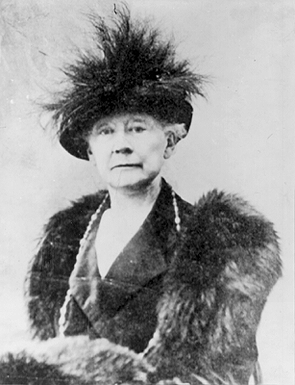Mary Stevenson Cassatt (Mary Stevenson Cassatt)

Artist. Born in Allegheny City, Pennsylvania (now Pittsburgh) and raised in Philadelphia, she was the fifth child of a wealthy upper class family. Aspiring to be a professional artist, she enrolled in the Pennsylvania Academy of the Fine Arts when she was 16. After becoming frustrated with the patronizing attitudes of the male teachers at the Academy she decided to move to Europe and study the works of the Old Masters on her own. She left for Paris in 1866 and in 1868 one of her portraits was accepted at the prestigious Paris Salon. She reluctantly returned home to Pennsylvania in 1870 but was unable to attract any interest in her paintings. Sadly, many of her early paintings were destroyed in a fire in Chicago in 1871. That same year she was commissioned by the archbishop of Pittsburgh to paint copies of two works by the Italian master Correggio. She used the money to resume her career in Europe and in 1872 the Paris Salon again accepted one of her paintings for exhibit. She later became friends with Impressionist Edgar Degas and in 1879 she exhibited 11 of her paintings as part of an Impressionist exhibition thus becoming the sole American artist at the forefront of the Impressionist movement. She differed from other Impressionists in that most of her paintings were charming portraits of women in casual domestic surroundings or mothers with children. These paintings included Little Girl In A Blue Armchair (1878), A Cup Of Tea (1880), and Girl Arranging Her Hair (1886). Her last exhibit with the Impressionists was in 1886 and she later began experimenting with various techniques of painting. Her busiest and most successful period came in the 1890’s. Now widely known in America, many young American artists travelled to Europe seeking her advice. Some of her most famous works in this period, Woman Bathing, The Letter, and The Coiffure were inspired by Japanese masters and were put on exhibit in 1891. Some of her later works included The Boating Party (1894), Ducks (1895) and A Kiss For Baby Anne (1897). By 1915 diabetes had forced her into retirement and she spent the remaining 11 years of her life in almost total blindness. She died at her country home, the Chateau de Beaufresne in Mesnil-Theribus, France. She is widely recognized as one of the most important figures in the development of American culture and her commercial success inspired generations of women to follow their dreams of a career in the arts. (bio by: Decal) Family links: Parents: Robert Simpson Cassatt (1806 – 1891) Katherine Kelso Johnston Cassatt (1816 – 1895) Siblings: Lydia Simpson Cassatt (1837 – 1882)* Alexander Johnston Cassatt (1839 – 1906)* Mary Stevenson Cassatt (1844 – 1926) Robert Kelso Cassatt (1847 – 1863)* *Calculated relationship
Born
- May, 22, 1844
- USA
Died
- June, 06, 1926
- France
Cemetery
- Le Mesnil Theribus Cimetière
- Picardie
- France

